The wood of this plant is so strong that in deep antiquity made weapons from it, and the fruits are today a mandatory product in the diet of astronauts and travelers, since the content of ascorbic acid in them is extremely large. Meet - dogwood, beautiful and useful autumn gift. His name, apparently, our ancestors learned from the inhabitants of Caucasian or Crimean lands, where the Kizyl shrub forms impassible, thick thickets. In the literal translation from the Turkic "Kyzyl" is "red". This definition is very metachable by the color of ripe berries of shrub, who consider it to the main decoration. An inchurient plant, the wayward doghouse became a long time ago, during the times of the ancient Romans and the Greeks. In Russia, culture learned in the XVII Art., And the main interest of domestic gardeners was caused by the extraordinary benefit of ripe fruits of the plant. The contemporary gardening society thinks about the cultivation of Kizyl, let's talk in the article.
Kizil: Quick description
The plant belongs to the family of Kizylov, in nature there are about 50 varieties. Most of the representatives of this kind are represented by shrubs and trees, the rest look like grassy perennial or weathered winter-green plants.
Kizil ordinary, or male - the most common shrub in the family. The height of adult copies reaches 2.5 m. Kizil always attracts attention to others. Healthy well-groomed bushes are good by themselves: they have brilliant drying color hanging shoots, juicy green opposite or regular leaves and dense heads of creamy white flowers. Kizil's flowering can be admired in May for two weeks.
Since the beginning of August and until late September, shrub is fruit. Kizyl berries are not the same on external signs. The fruits of cultural copies are distinguished by cylindrical and at the same time elongated form, grow up to 3 cm long. But there are also such types of Kizyl, whose berries have a barrel or pear shape, and the fruits of certain types of plants have been published and can be confused with the cherries at all. Most often, Kizylovy berries are saturated red, but also there are pink, yellow, purple and even black fruits. Their taste is varied: from sweet to tart notes. All berries in the photo below belong to different varieties of Kizyl:
Such a plant, like a dogital, you can give any shape, it all depends on what you want to see on your site - a bush or tree. All variations of the cylinder are distinguished by high frost resistance, but even the most stronger instances can make it possible to frozen shoots ends if the thermometer column drops to -30 0C. This plant is rightfully considered a long-liver, since under favorable conditions calmly "overcomes" the centenary frontier.
Kizil: Popular views and varieties
We have already introduced our readers with a coil ordinary, the most famous species of this culture. The most common in amateur gardeners with varieties of the species are:
- Pyramidalis - plant branches naturally form a crown, the shape of which resembles a pyramid.
- Nana is a miniature dogwood with a ball shape of the crown.
- Variagates - Dogwood leaves framed with white stripe.
- Aurea - Golden foliage serves decoration of this variety.
The following appearance is white - also very common. It is cultivated throughout Russia. His flexible and thin branches of a red-orange shade shrub stretches upwards, reaching 3 m in height. The surface of young shoots of the vigor of this species covers a white flare. Wide a bit of wrinkled leaves has an ovoid shape. Dark green on the outside and whitish from the bottom, in the fall they acquire a saturated dark lilac color. Flowers shrub 2 times a year: it is covered by an abundant scattering of small white flowers in the first half of summer and with the arrival of autumn. White rounded fruits of a bluish shade are closer to autumn. The most beautiful decorative forms of this species are Elegantissima, Siberian Aurea and Siberian Variagat.
Dogwood is a bloody-red frequent resident of underols in mixed and deciduous forests. Height it reaches 4 m and is distinguished by a well-developed crown and drooping green, red and purple shoots. With the arrival of autumn, the rounded leaves of this dogist are painted in a rich red color. Shrub flowers with small and inconspicuous flowers about 15-20 days. Black fruits beneficially shadow a beautiful shade of leaves. The most beautiful shapes of the Dogwood of Blood-Red - Kizil Mitch, Variagat and Green.
Dogwood blooming is a leaving from the eastern lands of North America. This high leaf fall tree is highlighted by a bulk branching crown and blooms earlier than the leaves are blown. In the fall, the leaves are painted in bright red color. The most famous varieties are the Cherokee Chif and Rubra.
Features of kizyl cultivation
The optimal time for landing of a dog with great precision suggests a poplar: as soon as the tree begins to lose its leaves, you can land a dog. It is best to engage in this plant that falls in the fall, because in the spring you need to hurry to get into the gap between how the soil warms and sometimes when the kidneys of Kizyl seedlings are dissolved. Best of all, the Kizyl bush or a tree will feel in half, in the southern or south-western plot with limestone soil, where groundwater takes place not higher than 1.5 m. Dogwood, no doubt, is also taken into with acidic soil, but in its growth And the quality of the harvest will not affect the best way. The plant needs a personal comfort zone: Kizil can not be planted close to the fence, other bushes (trees) and buildings. The distance between it and the closest object should be at least 3 - 5 m. The fruction of the dog is possible only if there is a couple of nearby (and even better - two pairs) related bushes. It is necessary to land them at about 4 - 5 m from each other.
Kizyl seedlings can be planted in an open ground when they reach 2 years. About the readiness for landing should also be judged by the external signs of the plant: its height should be at least 1.5 m, the diameter of the barrel is 2 m, and there should be about 5 skeletal sprigs on the trunk. The doser landing moon is a spacious pit 80 cm deep and width. When the relevant dimensions are dug, drive to it for a future seedling. Stick drive from the other side, where the wind is most often blowing. In the fertile soil, which was taken out in the process of training the landing pit, you need to add humid and mineral fertilizers, and then pour it with a hill to the center of the pit. On this hill, there is a young bush of Kizyl, carefully spread its roots and only then fall asleep in the well the remaining part of the fertilous soil. In this case, the seedling is maintained so that its root neck remains about 4 cm above the ground level. After Kizil, you need to pour 3 full buckets of water. The root neck will be on the same level with the surface of the site, when the soil is well soaked with water and falls. Then it is necessary to trim the shoots of a young bush on 1/3 of the length and, having tied a bush to a support, to climb the land in the barrel with a layer of humus or dry ground from the lower layer of soil.
Cryl care: useful recommendations
If you are interested in how to grow strong and beautiful dogwood in the garden, then to start you must remember the main rule of care for it - this is a regularity. The plant needs to regularly water, loosen the soil around it, clean the plot from weeds, trim the extra shoots and fertilize. The need for regular care is dictated by the fact that Kizil fertures annually, without breaks to rest. The harvest of next year is laid from May to June of the current year. This means that flower kidneys that ripen in parallel with increasing shoots, until the end of the period of active growth, should be formed to form finally. That is why you need to always water and fertilize Dogis on time.
In watering this plant there is one important nuance. Dad has a surface root system, therefore it is important to ensure that water in watering falls on its intended purpose, and not spread throughout the site. To ensure the roots of the bush full moisturizing, dig around the dogwood shallow furrow and leut water into it. Watering the Kizyl of Garden must be balanced, excess are not allowed. When the soil is well soaked with water, it is loosened to a depth of no more than 8 - 10 cm and at the same time clean the site from weeds.
During the warm season, Kizil must be picked up by complex fertilizers: in the first half of the season, fertilizers are used on a nitrogen-phosphate basis, and in the second half - on potash (good wood ash is suitable). It is also suitable for a plant and compost with a humus, but calcium remains the main component for good growth of Kizyl - in the ground it must be present.
After landing, Kizyl to a permanent place, the shrub needs regular trimming. In the cold season or at the beginning of spring, when the plant still rests, it is necessary to put it in order: to cut off all damaged and frostbed branches that can be the place of concentration of fungal microorganisms and pest insects. When trimming, you need to observe certain security measures: dip the scissors in the solution chloride (proportion of 1 to 3) so as not to break pathogenic microorganisms on healthy branches. The blades need to disinfect before the trimming of each sprig. Healthy, but very old branches, also require trimming. Their absence will be a stimulating push for the active growth of new shoots. In addition, Kizil must certainly get rid of branches and shoots that grow inside the bush. Grafted plants instances are cut below the vaccination location. In the so-called forming trimming, the bush, as a rule, does not need, since the branches and the leaves of the dog are forming a natural neat crown.
Kizyl had a good natural immunity to disease and pests, which suffer from other plants. However, with a certain coincidence, the shrub can hit the rust - the symptoms of the disease appear in the form of large yellow spots on the leaves. The trouble will help eliminate burglar liquid. Sometimes the owner of the Kizyl may encounter a tormentous dew, which manifests itself with a scattering of small white specks on the leaves of the plant. In this case, Kizil is treated with colloidal gray. Among the pests the greatest danger to Kizyl are the Cherver Ulitkov and the Caterpillar-Merchicarian. The first insect is destroyed by lime, second - with the help of Paris greenery.
On the preparation of Dogwood to wintering you need to know the following: Dogwood is characterized by good frost resistance, but young bushes can still suffer from frost at temperatures below 25 - 30 0S. In order to protect the barrel and the branches of a non-fastened plant, its base is plunged with a mixture of the Earth and sawdust, and the neper is covered with a sweetheart. In winter, you need to keep track of the earth around a crosswood remaining without snow, otherwise the soil will freeze, and the roots of the plant will suffer. In the spring, the bush is released from shelter and embankment, after which they remove dry and damaged branches.
Methods of breeding Kizyl
Gardeners lovers enjoy mainly the vegetative reproduction of Kizyl, although some is not a pity and on the seed reproduction of the plant.
How to get a bone dog
The bone of the plant is taken out of the pulp and lowered in the "nest" of the wet moss for 10 to 12 months. In such an environment, it is easy to maintain a stable humidity - it is necessary in order for the seed stratified before sowing. At SemiDoli, the bone of the plant is not divided, so it is lowered by a maximum of 3 cm in the ground.
Seeds that have not passed stratification, at best, the sprouts will be allowed after 1.5 - 2 years, and may not be absorbing at all. Unlike them, the prepared seeds give seedings per year.
For the seeds of Kizyl, they care according to the standard scheme: moderate watering, weeding as needed, complex feeding, protection of weak sprouts from direct sunlight. During the first year after landing from the bone, shoots appear up to 4 cm high, by the end of the second year they grow up to 12 - 15 cm, and in the fall they can already be replaned with open ground. For fruiting these copies will be ready after 7-10 years.
Doggle breeding by drawing
To reproduce the dog, the green parts of non-mature bushes are chosen by age 5 - 6 years old, since the gloves of the twigs simply will not be able to take care. On Kizille, you need to choose actively growing shoots and early in the morning cut the cuttings from them at 10 - 15 cm long. On each cutlets there must be two pairs of leaves and growth point. These twigs put in the water immediately after cutting.
Please note that cutting the cuttings, the cut should be made oblique and it should be under the kidney at a distance of 0.5 - 1 cm.
Immediately before landing, the cuttings are 6 - 12 hours in a solution of heteroacexin 3%, pre-removing from them the bottom pair of leaves. Then the planting material is washed and planted on the shaded area at an angle of 45 0. To land at the landing site you need to pour out well-washed sand (a layer of about 8 - 10 cm) and cover with a plastic film in such a way that a leaf size is formed between the coating and seedlings in size for 15-20 cm. Then the cuttings need to pour and continue to follow Always been moisturized. For watering the dog, it is more correct to use a fine sieve so that the water does not flow with a solid jet, but sprinkled. From time to time, polyethylene should be lifted to air seedlings. The first flares will appear on the cuttings of Kizyl in about 2 to 3 weeks, then the shelter in the form of a film can be removed for a while, thus hardening seedlings. After another 10-14 days, the cuttings are quite stronger, and they will already be able to fertilize with a solution of ammonia nitrate (30 g per 1 bucket of water). On a permanent place, young bushes of Kizyl tolerate the following autumn.
How to propagate dogwood through vaccination
The vaccination of the plant by single kidney (eye) is produced in August-September. As a flow, seedlings and rooted two-year seedlings of wild dogs are used, and an alignment variety of Kizyl act as a lead. A crushing notch make a cruciform with a sharp blade, while the vertical incision is made pretty deep, up to 3 cm. From the lead they take the kidney: it is cut off so that it remains with the bark, the cherry sheet and the wooded part. The eyes are immersed in the deepening of the vertical notch and attach it to the scotch. After 2 - 3 weeks, the petioles fall off if the eyepication was produced in all the rules.
Doggle breeding with melting
This method of breeding of Kizyl involves the use of horizontal arcoid shoots-one-air. In the spring, when the frost release the soil, the area where the dog is growing, dripping, adding to the feeder there, then align and break there small grooves. At these recesses, they are placed and pinned the shoots of the plant, they sprinkle their soil on top, and the tops are pouring. After green sprouts appear on the fixed places, the green sprouts will appear with a height of at least 10 - 12 cm, they are upset by the earth and after 3 weeks, when they will increase as much as much as they pour out to half again. Fast shoots are separated from the maternal bush with the arrival of autumn or the next spring and plant on a permanent place.
How to multiply dogwood decene
This method is practiced when transplanting a Kizylovoy bush to a new site. With the arrival of spring heat, to swelling of the kidneys, or late in autumn, for 3 to 4 weeks before the arrival of frosts, the shrub is digging, cutting off the old and damaged branches, clean the roots from the ground and cut it into a slightly identical part in size. Each deleted should have a healthy above-ground part and strong roots. Before boarding, very old roots need to cut, and the rest is a bit shorten.

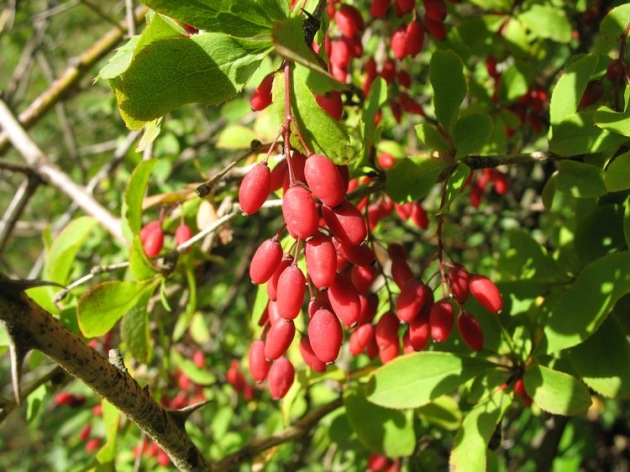
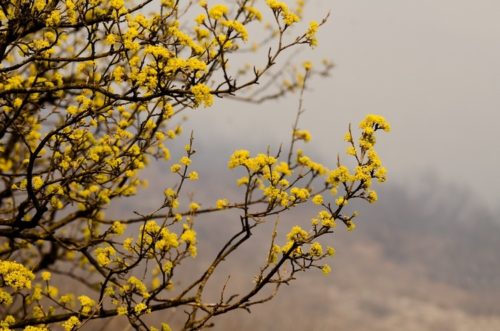
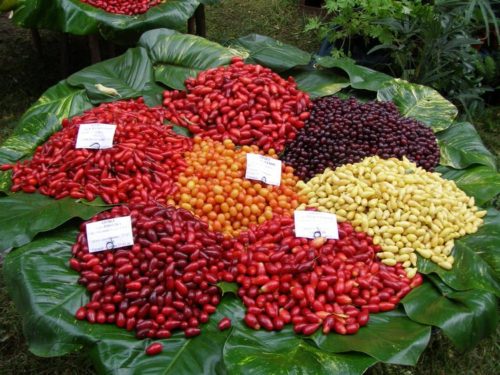
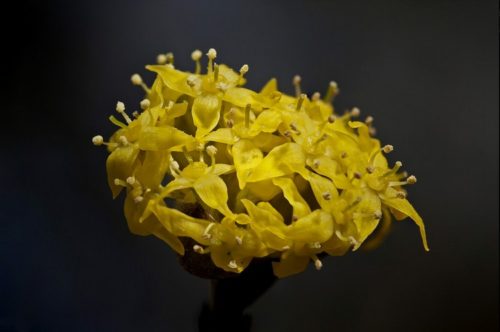
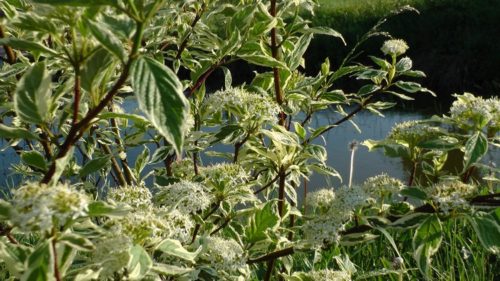
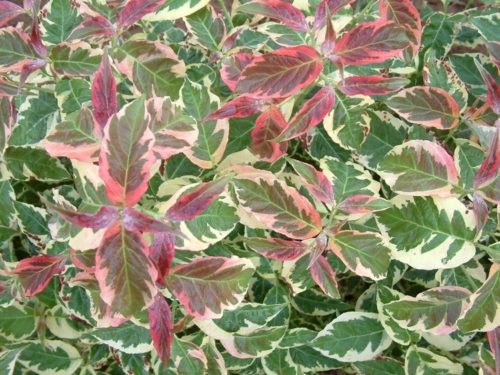
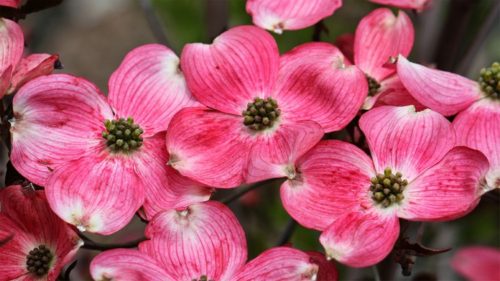
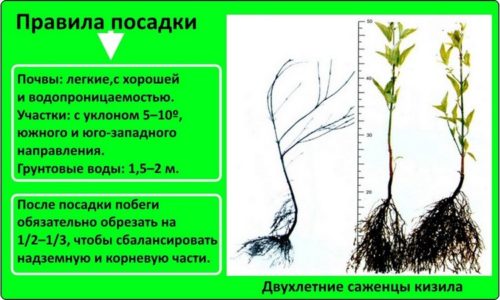
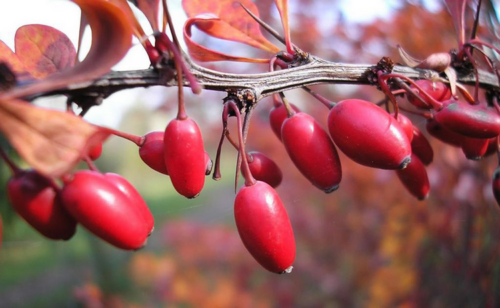
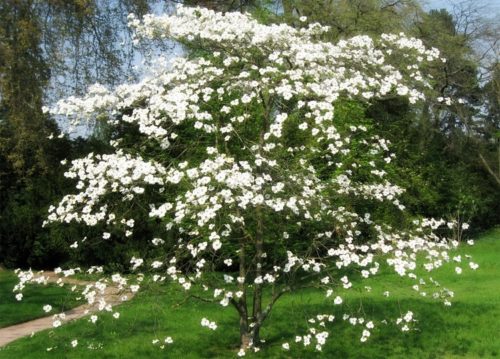
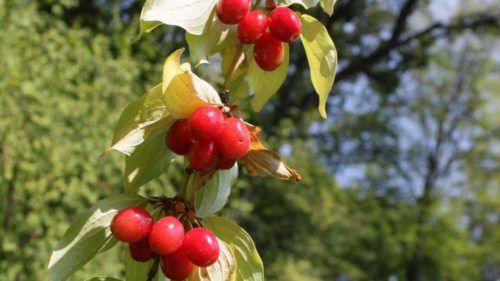
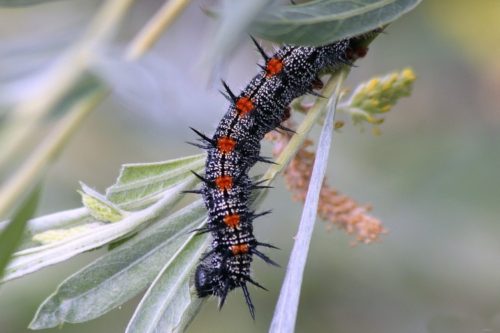
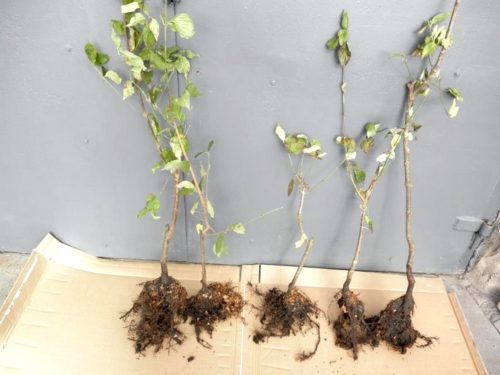
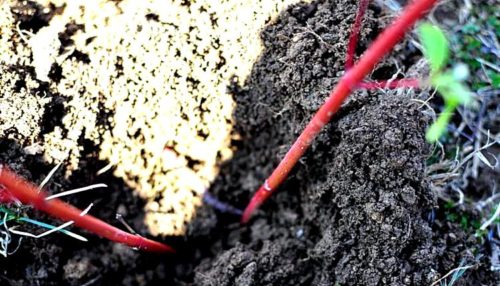












 Start a discussion ...
Start a discussion ...